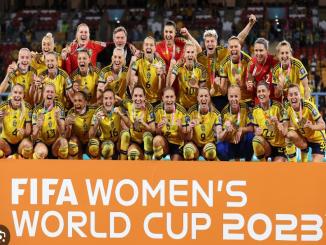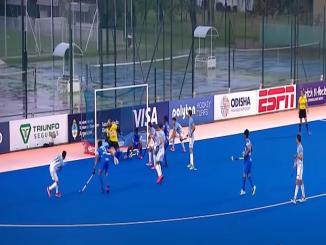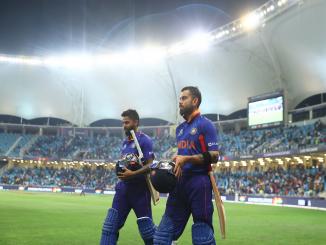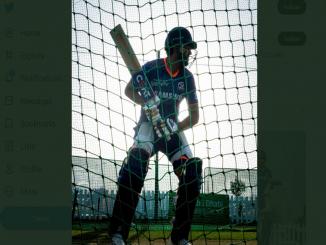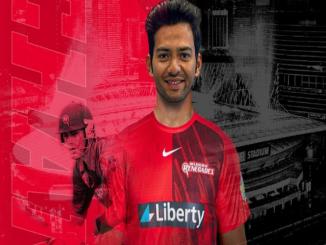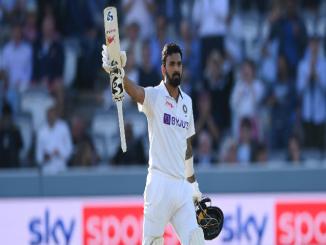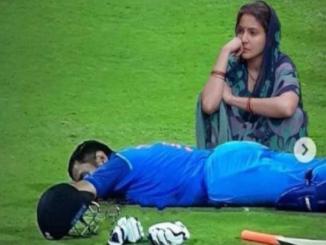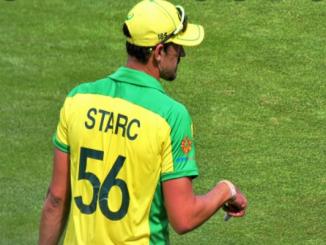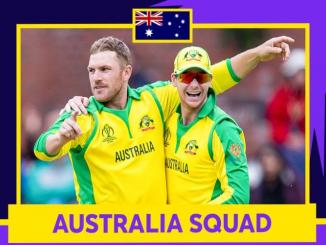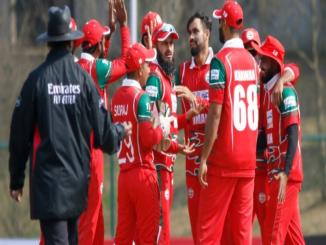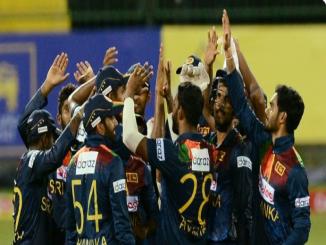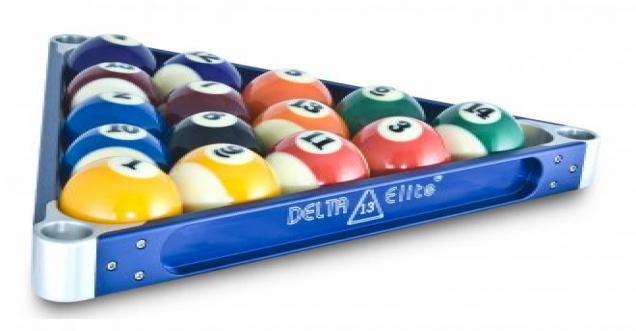
Pool is a simple game to understand, only thing is give some time to play and learn with rules. Some of the general rules which apply to this game as per the world pool-billiard association are as below.
Rule1: General Objective of the game
Eight-Ball is a call shot game played with a cue ball and 15 object balls, numbered 1 through 15. One player must pocket balls of the group numbered 1 through 7 (solid colors), while the other player has 9 through 15 (stripes).
The player pocketing either group first and then legally pocketing the 8-ball wins the game.
Rule2: RACKING THE BALLS
The balls are racked in a triangle at the foot of the table with the 8-ball in the center of the triangle, the first ball of the rack on the foot spot, a stripe ball in one corner of the rack and a solid ball in the other corner.
Rule3: CALL SHOT
In Call Shot, obvious balls and pockets do not have to be indicated. It is the opponent's right to ask which ball and pocket if he is unsure of the shot. Bank shots and combination shots are not considered obvious, and care should be taken in calling both the object ball and the intended pocket. When calling the shot, it is never necessary to indicate details such as the number of cushions, banks, kisses, caroms, etc.
Any balls pocketed on a foul remain pocketed, regardless of whether they belong to the shooter or the opponent. The opening break is not a "called shot." Any player performing a break shot in 8-Ball may continue to shoot so long as any object ball is legally pocketed on the break.
Rule4: DECISION OF BREAK
Flip a coin (NOT OVER THE TABLE). Winner of the coin toss has the option to break. During competition, players will alternate breaking on each subsequent game.
Rule5. LEGAL BREAK SHOT
To execute a legal break, the breaker (with the cue ball behind the head string) must either pocket a ball, or drive at least four numbered balls to the rail. If s/he fails to make a legal break, the other player has three choices: A) Play from there. B) Break again. C) Have the other player re-break.
Rule6: NO JUMP SHOTS OR MASSE
Rule7: OBJECT BALLS JUMPED OFF THE TABLE ON THE BREAK
If a player jumps an object ball off the table on the break shot, it is a foul and the incoming player has the option of accepting the table in position and shooting, or taking cue ball in hand behind the head string and shooting.
Rule8: SCRATCH ON A LEGAL BREAK
If a player scratches on a legal break shot (cue ball is pocketed): A) All balls pocketed remain pocketed (exception, the 8-ball: see rule 9). B) It is a foul. C) The table is open. NOTE: Incoming player has cue ball in hand behind the head string and may not shoot an object ball that is behind the head string, unless he first shoots the cue ball past the head string and causes the cue ball to come back behind the head string and hit the object ball.
Rule9: 8-BALL POCKETED ON THE BREAK
If the 8-ball is pocketed on the break, breaker may re-rack or have the 8-ball spotted and continue shooting. If the breaker scratches while pocketing the 8-ball on the break, the incoming player has the option of a re-rack or having the 8-ball spotted and begin shooting with ball in hand behind the head string.
Rule10: CHOICE OF GROUP
The choice of stripes or solids is not determined on the break even if balls are pocketed from only one or both groups. The choice of group is determined only when a player legally pockets a called object ball after the break shot.
Rule11: OPEN TABLE
The table is "open" when the choice of groups (stripes or solids) has not yet been determined. When the table is open, it is legal to hit a solid first to make a stripe or vice-versa. The 8-ball can be used in the middle of a combination, but if it is the first ball contacted, it is a foul and no stripe or solid may be scored in favour of the shooter. The shooter loses his turn; the incoming player is awarded cue ball in hand; any balls pocketed remain pocketed; and the incoming player addresses the balls with the table still open. On an open table, all illegally pocketed balls remain pocketed. NOTE: The table is always open immediately after the break shot.
Rule 12: SAFETY SHOT
For tactical reasons, a player may choose to pocket an obvious object ball and also discontinue his turn at the table by declaring "safety" in advance. A safety shot is defined as a legal shot. If a player fails to declare "safety" to his opponent and the called object ball is pocketed, the shooter is required to shoot again. Any balls pocketed on a safety shot remain pocketed.
Rule13: LEGAL SHOT
On all shots (except on the break and when the table is open), the shooter must hit one of his group of balls first and pocket a numbered ball, or cause the cue ball or any numbered ball to contact a rail. NOTE: It is permissible for the shooter to bank the cue ball off a rail before contacting the object ball; however, after contact with the object ball, an object ball must be pocketed, or the cue ball or any numbered ball must contact a rail. Failure to meet these requirements is a foul.
Rule14: FOUL PENALTY
In the event of a foul, opposing player gets cue ball in hand. This means that the player can place the cue ball anywhere on the table (does not have to be behind the head string except on opening break). This rule prevents a player from making intentional fouls which would put an opponent at a disadvantage. With "cue ball in hand," the player may use a hand or cue (including the tip) to position the cue ball. When placing the cue ball in position, any forward stroke motion contacting the cue ball will be a foul, if not a legal shot.
Rule15: SCORING
A player is entitled to continue shooting until failing to legally pocket a ball of his group. After a player has legally pocketed all of his group of balls, he shoots to pocket the 8-ball.
Rule16: ILLEGALLY POCKETED BALLS
An object ball is considered to be illegally pocketed when that object ball is pocketed on the same shot a foul is committed, or the called ball did not go in the designated pocket. Illegally pocketed balls remain pocketed and are scored in favour of the shooter controlling that specific group of balls, solids or stripes. The penalty is loss of turn only.
Rule17. PLAYING THE 8-BALL
When the 8-ball is the legal object ball, a scratch or foul is not loss of game if the 8-ball is not pocketed or jumped from the table. Incoming player has cue ball in hand.
Rule18. OBJECT BALL JUMPED OFF THE TABLE
If any object ball is jumped off the table, it is a foul and loss of turn, unless it is the 8-ball, which is a loss of game. Any jumped object balls are not re-spotted.
Rule19. COACHING (Applies to team play) A player can ask for a coach any time during the game. A player can ONLY be coached by a member of his own team. No unsolicited coaching is acceptable. NOTE: All infractions must be called by the opponent before another shot is taken, or else it will be deemed that no infraction occurred. THE ONLY PERSON WHO CAN CALL A FOUL IS THE OPPONENT.
Rule20. LOSS OF GAME
A player loses the game by committing any of the following infractions: A) Fouls when pocketing the 8-ball (exception: See Rule #9). B) Pockets the 8-ball on the same stroke as the last of his group of balls. C) Jumps the 8-ball off the table at any time. D) Pockets the 8-ball in a pocket other than the one called. E) Pockets the 8-ball when it is not the legal object ball.
Rule21: 9 ball rules
1. OBJECT OF THE GAME:
Nine-Ball is played with nine object balls numbered one through nine and a cue ball. On each shot, the first ball the cue ball contacts must be the lowest numbered ball on the table, but the balls need not be pocketed in order. If a player pockets any ball on a legal shot, he remains at the table for another shot, and continues until missing, committing a foul, or winning the game by pocketing the 9-ball. After a miss, the incoming player must shoot from the position left by the previous player, but after any foul the incoming player may start with the cue ball anywhere on the table. Players are not required to call any shot. A match ends when one of the players has won the required number of games.
2. RACKING THE BALLS:
The object balls are racked in a diamond shape, with the 1-ball at the top of the diamond and on the foot spot, the 9-ball in the center of the diamond, and the other balls in random order, racked as tightly as possible. The game begins with cue ball in hand behind the head string.
3. LEGAL BREAK SHOT:
The rules governing the break shot are the same as for other shots except: A) The breaker must strike the1-ball first and either pocket a ball or drive at least four numbered balls to the rail. B) If the cue ball is pocketed or driven off the table, or the requirements of the opening break are not met, it is a foul, and the incoming player has cue ball in hand anywhere on the table. C) If on the break shot, the breaker causes an object ball to jump off the table, it is a foul and the incoming player has cue ball in hand anywhere on the table. The object ball is pocketed (exception: if the object ball is the 9-ball, it is re-spotted).
- DECISION OF BREAK:
Flip a coin (NOT OVER THE TABLE). Winner of the coin toss has the option to break. During competition, players will alternate breaking on each subsequent game.
5. PUSH OUT:
The player who shoots immediately after a legal break may play a push out in an attempt to move the cue ball into a better position for the option that follows. On a push out, the cue ball is not required to contact any object ball nor any rail, but all other foul rules still apply. The player must announce the intention of playing a push out before the shot, or the shot is considered to be a normal shot. Any ball pocketed on a push out does not count and remains pocketed except the 9-ball. Following a legal push out, the incoming player is permitted to shoot from that position or to pass the shot back to the player who pushed out. A push out is not considered to be a foul as long as no rule (except rules 8 and 9) is violated. An illegal push out is penalized according to the type of foul committed. After a player scratches on the break shot, the incoming player cannot play a push out.
- CONTINUING PLAY:
On the shot immediately following a legal break, the shooter may play a "push out" (see rule 6). If the breaker pockets one or more balls on a legal break, he continues to shoot until he misses, fouls, or wins the game. If the player misses or fouls, the other player begins an inning and shoots until he misses, fouls, or wins. The game ends when the 9-ball is pocketed on a legal shot, or the game is forfeited for a serious infraction of the rules.
7. FOULS:
When a player commits a foul, he must relinquish his run at the table and no balls pocketed on the foul shot are re-spotted (exception: if a pocketed ball is the 9-ball, it is re-spotted). The incoming player is awarded ball in hand. If a player commits several fouls on one shot, they are counted as only one foul. 8. BAD HIT If the first object ball contacted by the cue ball is not the lowest numbered ball on the table, the shot is foul. 9. NO RAIL If no object ball is pocketed, failure to drive the cue ball or any numbered ball to a rail after the cue ball contacts the object ball on is a foul. 10. CUE BALL IN HAND When the cue ball is in hand, the player may place the cue ball anywhere on the bed of the table, except in contact with an object ball. The player may continue to adjust the position of the cue ball until shooting. 11. OBJECT BALLS JUMPED OFF THE TABLE An unpocketed ball is considered to be driven off the table if it comes to rest other than on the bed of the table. It is a foul to drive an object ball off the table. The jumped object ball(s) is not re-spotted (exception: if the object ball is the 9-ball, it is re-spotted) and play continues. 12. NO JUMP SHOTS OR MASSE 13. THREE CONSECUTIVE FOULS If a player fouls three consecutive times on three successive shots without making an intervening legal shot, the game is lost. The three fouls must occur in one game. The warning must be given between the second and third fouls. A player’s inning begins when it is legal to take a shot and ends at the end of a shot on which he misses, fouls or wins, or when he fouls between shots. 14. END OF GAME
On the opening break, the game is considered to have commenced once the cue ball has been struck by the cue tip. The 1-ball must be legally contacted on the break shot. The game ends at the end of a legal shot which pockets the 9-ball, or when a player forfeits the game as the result of a foul. NOTE: All infractions must be called by the opponent before another shot is taken, or else it will be deemed that no infraction occurred. THE ONLY PERSON WHO CAN CALL A FOUL IS THE OPPONENT.
Poker Pool
Rule22: General POKER POOL RULES:
Except when clearly contradicted by these additional rules the GENERAL RULES OF POCKET BILLIARDS apply.
TYPE OF GAME Poker Pool is a game that uses the skill of pool with the luck of the cards to create a game that requires different strategies each time you play. PLAYERS Two or more players can play. BALLS USED A complete set of billiard balls 1-15. CARDS USED Custom Poker Pool Deck (4 cards to match each ball for a total of 60 cards). THE RACK Standard triangle rack, Balls placed at random. THE GAME A full rack of standard billiard balls is racked at random with no preset order. The game requires two or more players. Each player is dealt 5 or 7 cards from a poker pool card deck
(60 cards). After determining the order of play, one player breaks the rack of balls. Any balls potted off the break that do not match the cards the player holds are returned to the table in a straight line back from the triangle spot and loses his turn. If off the break a player pockets a ball that matches a card in his hand, they then must place the card face up on the rail of the table and if their opponents also hold a card that matches the ball potted they also place their card face up. A player continues to pot his hand and place cards face up until they miss or foul. Any ball potted that does not match a card in that player’s hand is returned to the table and the next player takes their turn. Before they make their final ball a player must verbally declare LAST CARD. Game is over when a player who is at the table has no cards left. PENALTY FOR FOULS After all foul shots players must draw a further card to add to their hand. Failure to declare LAST CARD a player must draw a further TWO cards. SCORING Players are penalized one point per card for all they have left at the end of the game.




